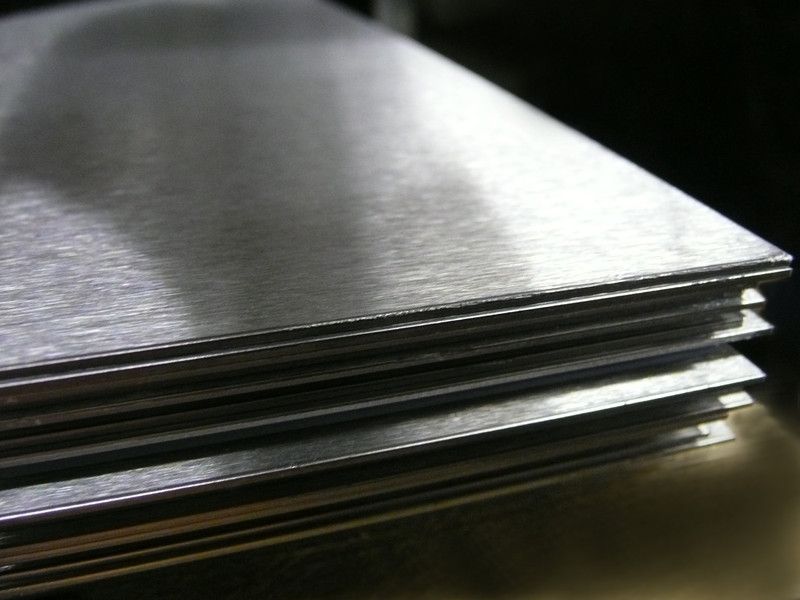
Metal composite material refers to two or more different kinds of metal through metallurgical combination of composite materials, common titanium steel composite, copper steel composite, titanium zinc composite, titanium nickel composite, nickel steel composite, copper aluminum composite, nickel copper composite and so on. Because it can give play to the advantages of each component material, realize the optimal allocation of each component material resource, save precious metal materials, and achieve the performance requirements that a single metal can not meet, metal composite materials have been widely used in more and more fields.
The first contact with metal composite materials, there must be doubts, different metals, how they are "stuck" together? Common metal composite methods have the following several, together to understand.
The first is the rolling compound method, under the rolling force of the rolling mill, the plastic deformation of the surface of the two metals to be composite occurs, resulting in the metal surface rupture, the fresh metal exposed from the rupture contact with each other, and the metallurgical combination between the metals is formed under the action of pressure. According to the temperature of the rolling process can be divided into hot rolling and cold rolling. Hot rolling method is to use the rolling force of the rolling mill to roll the metal to be combined at a certain temperature, and then form metallurgical bonding. Hot rolling composite is the main method to produce composite sheet metal, which has the advantages of simple process and high production efficiency, and can give full play to the rolling ability of rolling mill and the plastic deformation ability of materials at high temperature, and obtain high bonding strength of metal composite interface. Cold-rolled composite is developed on the basis of hot-rolled composite, because of the low temperature of rolling composite, it can avoid the phase transformation of metal materials that is not conducive to bonding, the microstructure changes, and the formation of brittle intermetallic compounds. The properties of the composite materials produced by cold rolling are stable, and a variety of materials can be rolled together, but the deformation rate of the base metal in the rolling process is as high as 60%~70%.

At the same time, the explosion-rolling compound method refers to the use of explosive composite technology will need to compound two or more kinds of metal plates, according to a certain thickness ratio of welding composite slab, and then according to different conditions and requirements, hot or cold rolled into the required thickness specifications of the composite plate. Powder metallurgy method is to lay evenly mixed metal powder on the surface of the base metal for pressing, and then sintered at high temperature in a protective atmosphere, and finally made of composite materials by cutting. The diffusion compound method is to closely bond two metals and maintain them under a certain temperature and pressure for a period of time, so that the atoms between the contact surfaces diffuse each other to form a metallurgical bond.
In addition, the centrifugal casting method is to pour the molten alloy into the rotating matrix metal cast, under the action of centrifugal force, the alloy molten liquid is attached to the inner wall of the cast, and after rapid cooling and solidification, it is closely combined with the matrix metal. The casting compound method is to pretreat the surface of the base metal and preheat it to a certain temperature, and then immerse it in the casting mold cavity filled with a layer of metal liquid, or put the base metal into the casting mold cavity, and then cast a layer of metal liquid into the casting mold cavity, and the liquid metal solidifies and cools to form a composite material. Continuous casting and rolling combined with traditional casting method and rolling method, the high temperature metal liquid is continuously cast on the surface of the matrix steel plate, so that the liquid metal in the semi-solidified state and the solid matrix metal are continuously rolled on the rolling mill at the same time, and the rolling force of the rolling mill and the high temperature diffusion of the liquid metal form a metallurgical combination of the two metals.
In-Depth Analysis of Global Supply and Demand for Silicon Steel
2025-10-30Stainless steel plate bending processing of the key precautions
2024-06-17The Best Cutting Board is Stainless Steel
2023-04-24SS Production Enterprises in Henan Province have been Shut Down
2020-12-16The difference between 304 stainless steel and 316 stainless steel
2023-09-23South Korea imposes AD duties on stainless steel flat-rolled products
2021-08-05






